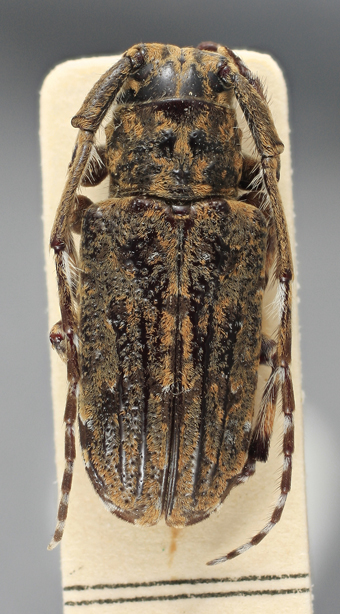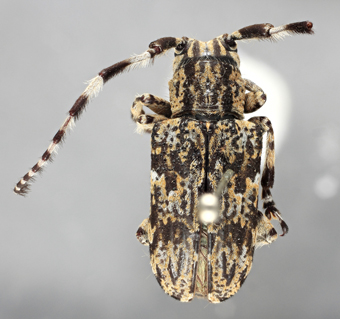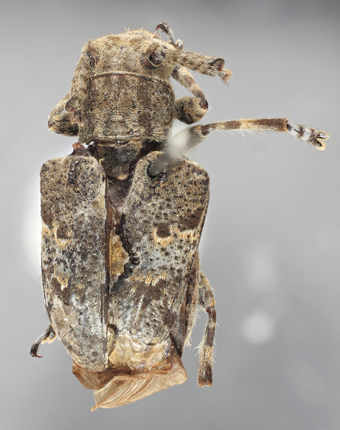|
Mesosini Classification
Selected References to Larvae Specimens |
 Agelasta dayremi Breuning, 1938; dorsal holotype specimen Cerambycidae:Lamiinae:Mesosini Photograph © E.H. Nearns  Agelasta marmorata (Pic, 1927); dorsal holotype specimen Cerambycidae:Lamiinae:Mesosini Photograph © E.H. Nearns  Agelasta pici Breuning, 1938; dorsal holotype specimen Cerambycidae:Lamiinae:Mesosini Photograph © E.H. Nearns All Mesosini exemplar species images |

